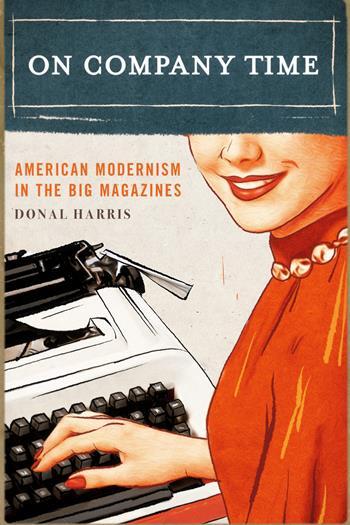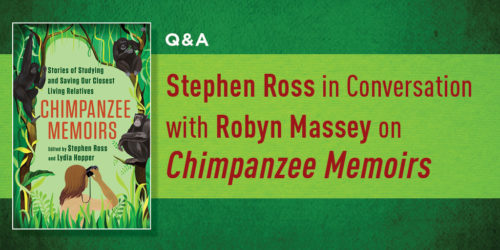On Modernist Magazines, Little and Small — A Conversation with Eric Bulson and Donal Harris (Part 2)
“Just about every serious author working in the U.S. contributed to big magazines in some capacity, and plenty of writers worked for them for multiple years, if not decades. Lots of them complained about this situation, but I found it an interesting occupational fact that shaped their ideas about what it means to be an author or ‘professional writer’ and what it means to produce literature. And, on the other side, I wanted to know why these magazines thought it was a good idea to hire poets to write copy!”—Donal Harris
This is the second part of a two-part conversation between Eric Bulson, author of Little Magazine, World Form and Donal Harris author of On Company Time: American Modernism in the Big Magazines (You can read part 1 here).
Bulson and Harris shift their focus from small to big to examine how magazines like Time, Life, The Crisis, shaped the direction of modernist literature the work and careers of W.E.B. Du Bois, Ernest Hemingway, Willa Cather and others. (Here is part one of their conversation):
Eric Bulson: On Company Time proves that Modernists weren’t as antagonistic to big magazines as we’ve been led to believe! So, how does this shift in focus influence our understanding of that period in literary history we call “modernism”? Are Willa Cather and W.E.B. Du Bois really modernists? Do we need to rethink, maybe even throw out the term?
Donal Harris: I don’t think anyone will be surprised to find out Ernest Hemingway or F. Scott Fitzgerald, or even Gertrude Stein, occasionally crossed paths with big magazines. But what I discovered is that just about every serious author working in the U.S. contributed to big magazines in some capacity, and plenty of writers worked for them for multiple years, if not decades. Lots of them complained about this situation, but I found it an interesting occupational fact that might influenced their ideas about what it means to be an author or “professional writer” and what it means to produce literature. And, on the other side, I wanted to know why these magazines thought it was a good idea to hire poets to write copy!
Does the fact that a lot of American modernists made a living by selling their talent as writers mean that we should do away with the term? I don’t think so. No more so than discovering little magazines’s longer and wider history outside of Western Europe and the United States (which I was fascinated to find out about!) means that we should get rid of that term. It just means that we think about modernism’s proclaimed market aversion slightly differently. Rather than a fact on the ground, it’s a rhetorical gesture that helped to differentiate modernism’s various types of experimentation from the innovations happening in mass-market magazines.
A side effect of this altered approach is the new visibility of people like Cather and Du Bois within modernism. They took both their magazine work and their literary aspirations very seriously, and they thought about them as two sides of the same coin. I mean, it’s hard to imagine the originality of McClure’s magazine without Willa Cather, and it’s hard to imagine Cather’s novel The Professor’s House without what she learned while editing McClure’s.
EB: The story you tell about Big Magazines ends with the arrival of television. Was TV really as powerful a force as you argue here?
DH: Ending with the rise of television in the early 1950s was partially a decision of convenience, to be sure. The book is about the relationship between various forms of print media and the people who write and publish them. So I end when a new, non-print media takes the history of journalism and literature in a different direction.
Certainly what you call the “little wireless magazines” pushes forward the artistic possibilities of electronic communication to a much earlier date, which I found compelling. The periodical world I wrote about is less sanguine about these changes. In 1948, when T.S. Eliot won the Nobel Prize in Literature, about one percent of American households owned televisions. When Hemingway won it in 1954, over fifty percent did, and by 1958 over eighty percent did. And you can watch magazine circulations fall as television spreads. It was only natural for magazine editors to see the flood of television screens as a bad omen for their own longevity.
EB: So many modernists needed little magazines because no one else would print their work. Is it true, then, that the Big Magazine was only available to modernists once they already achieved some notoriety with commercial publishers and presses?
DH: Magazines exponentially expanded in size and scope at the beginning twentieth century: between 1895 and 1905, circulation in the U.S. tripled. So there were lots of jobs to fill in newly founded editorial offices for ambitious writers. All of the people I talk about—Cather, Fitzgerald, Djuna Barnes, Du Bois, James Agee, and others—started in big magazines very early in their careers, usually in the editorial office but sometimes as contributors of stories. For the most part, they weren’t publishing experimental work, of course. Djuna Barnes, for example, first went to Europe and met other expat writers while on assignment as a reporter for McCall’s and Vanity Fair. The most famous example here is Ernest Hemingway, who claims to have learned everything he needed to know about writing from his time at the Kansas City Star and from submitting articles by telegraph to the Toronto Star’s weekly magazine. So the idea of working at non-literary tasks certainly played a key role in Hemingway’s self-presentation, even if his actual newspaper and magazine writing don’t quite add up to how he talks about them.
EB: The magazine, as you mention, is related etymologically to the French word for “storehouse” (magasin). How many different shapes could these storehouses take? And how did the arrival of different print and recording technologies influence such things as the size, layout, even the image of who an author is?
DH: That’s a great question, and one that your book (which follows the etymology in a different direction) gave me a whole new perspective on. New or repurposed print technologies were key, and one of the most interesting cases I found was The Crisis, which W.E.B. Du Bois edited for decades. It was ostensibly the house organ of the N.A.A.C.P, but Du Bois had bigger plans and modeled its design on McClure’s and Century. That fight over the direction of The Crisis is the stuff of legend for scholars of African American literature and periodicals. Digging through The Crisis’s archives, I was surprised how often Du Bois mentioned this piece of office equipment, a multigraph, in his discussions about control of the magazine. It’s a forgotten technology today, but it allowed Du Bois and his staff to mock up and copy any kind of document they wanted: advertisements, circulars, official correspondence, even pages of the magazine. It allowed him to experiment with different design strategies for everything associated with The Crisis, which I think shaped the style of the magazine in key ways.
But it also speaks more broadly to how print technologies were part of a larger conversation in editorial offices and other institutions. It let Du Bois archive everything The Crisis created—both the magazine itself and all the “paperwork” associated with it—which he saw as crucial for the project of racial uplift. It also became a tool in his fight with the N.A.A.C.P. He listed it as “revenue” in his budgets, even though he was losing money, and he used it as an excuse to move the offices farther away from the N.A.A.C.P. so that he would have more independence in running The Crisis. I find it fascinating that this forgotten piece of office equipment could become a major player in one of my favorite magazines from the period.




